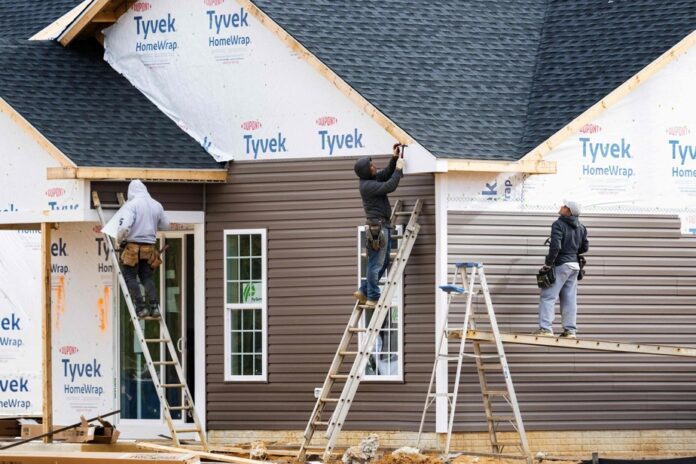(Washington) The slowdown in the US economy was confirmed in the first quarter, with growth in gross domestic product (GDP) well below expectations, the first tangible sign of the effects of the hike in Federal Reserve (Fed) rates. ) conducted over the past year to combat inflation.
In the first three months of the year, GDP growth was 1.1% at an annualized rate, according to an initial estimate released Thursday by the Commerce Department. This represents a strong slowdown compared to the 2.6% recorded in the previous quarter, but also well below analysts’ expectations, who rather expected growth of 2% in the quarter, according to the consensus of Briefing.com.
“GDP growth reflects an increase in consumer spending, public spending and exports, which offset the drop in private and real estate investment”, detailed the ministry in its press release, which also underlines that growth is suffering the effect of an increase in imports.
The trade deficit widened in the first two months of the year due to an acceleration in imports, particularly of raw materials and pharmaceutical products. The data for March will be published at the end of next week.
Furthermore, while household consumption held up over the first three months of the year, it slowed down over the months, even falling by 1% in March, while consumer confidence was also down.
Not without reason: even though inflation has slowed to the point of reaching 5% year on year in March, its lowest level for almost two years, according to the CPI index, it still remains too high and weighs on the household purchasing power.
The latter must also deal with rising borrowing costs, which rose steadily during the year, keeping pace with the increase in the main Fed rate. Overnight interest rates are now between 4.75% and 5%, the highest since 2007, and should continue to rise until inflation returns to 2%, the target set by the US central bank.
“Our data lead us to believe that the monetary tightening and the recent tensions in the banking system will lead to a slight recession, however stronger than what we had anticipated so far”, underlined the chief economist of Oxford Economics, Ryan Sweet, interviewed by AFP.
Because most analysts expect a more difficult end of the year for the United States, with growth that should be weak, even negative, over the coming quarters, in particular due to the tightening of financing conditions.
The Fed must indeed meet next week to decide whether or not to raise the rate again, while the market anticipates a moderate increase of around 0.25 percentage points.
Friday’s publication of the PCE inflation index, which is the one followed by the Fed, should give an indication of the direction that the central bank’s decision should take.
The fear for the Fed is to see a risk of inflation materialize “generalized in the economy”, alerted on April 21 one of its governors, Lisa Cook, who underlined that if the various measures of inflation “ were back from their peaks, they remained high, suggesting that inflation had become widespread in the economy”.
“The big question is whether, and how quickly, inflation will continue on its downward path towards our 2% target,” she added.















